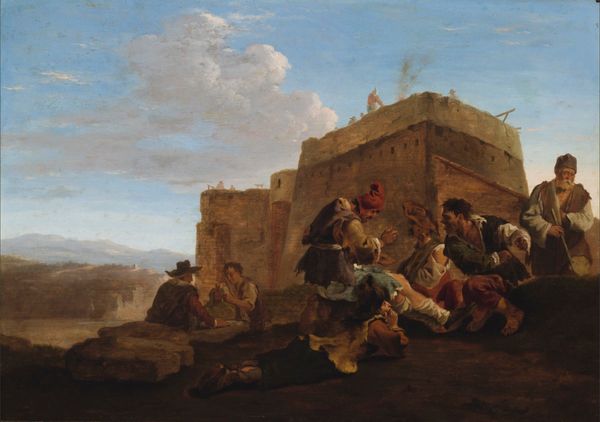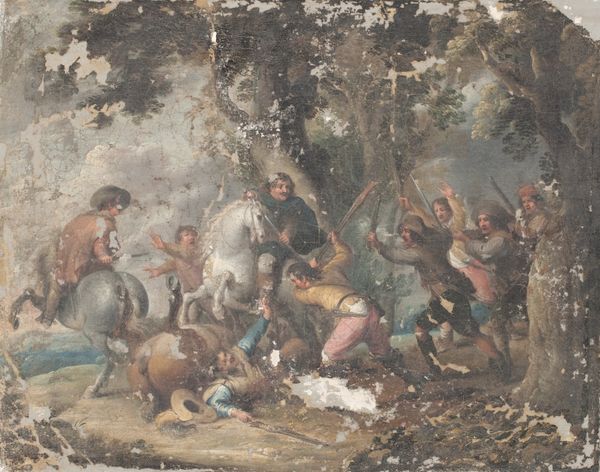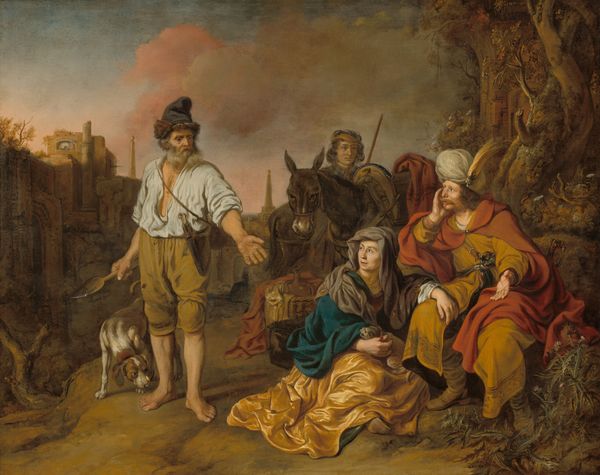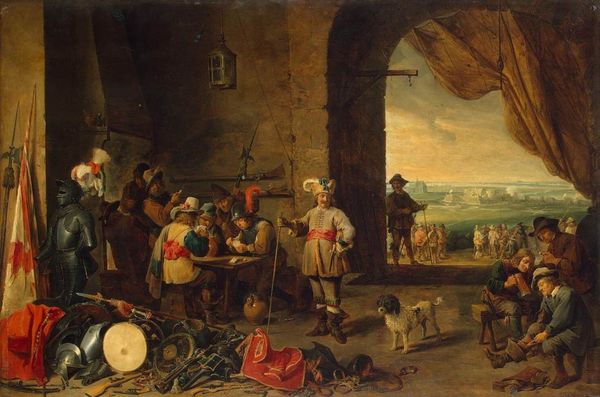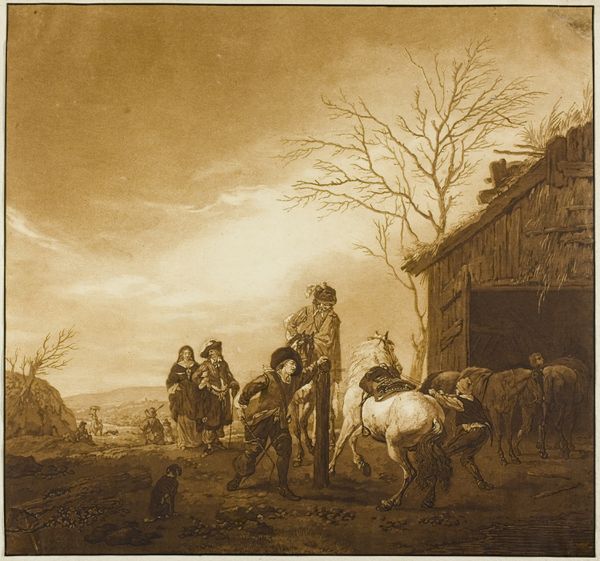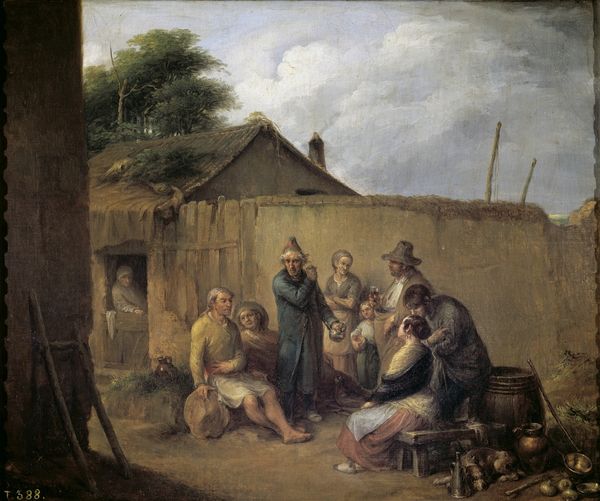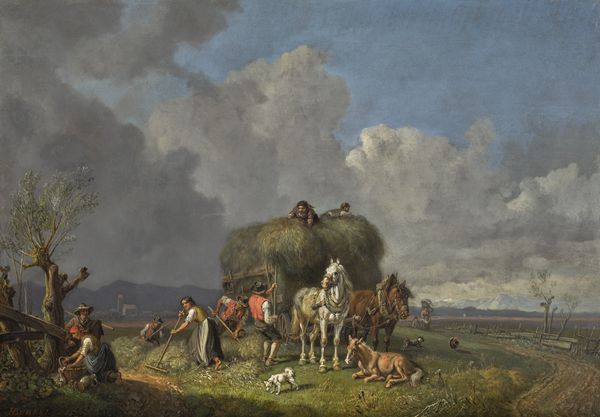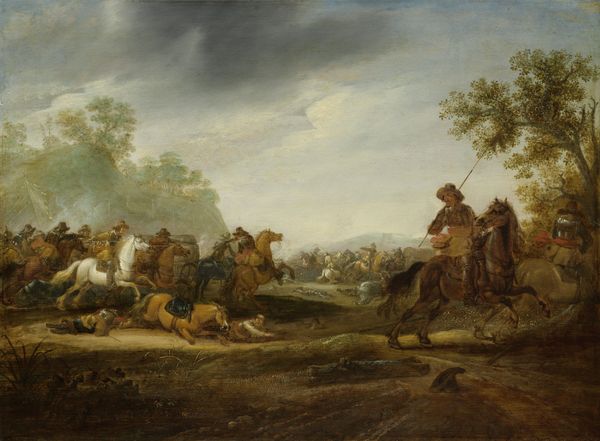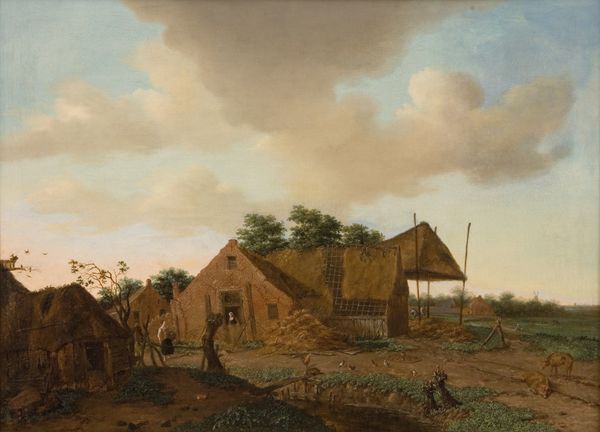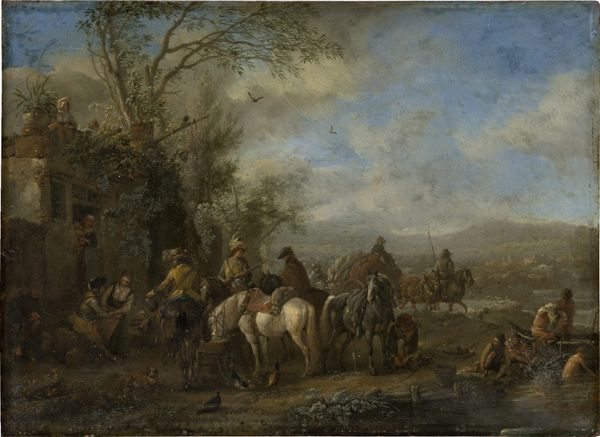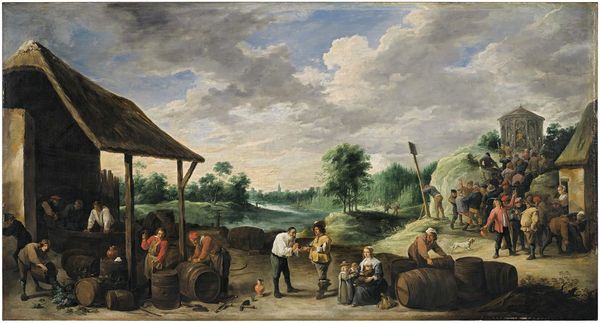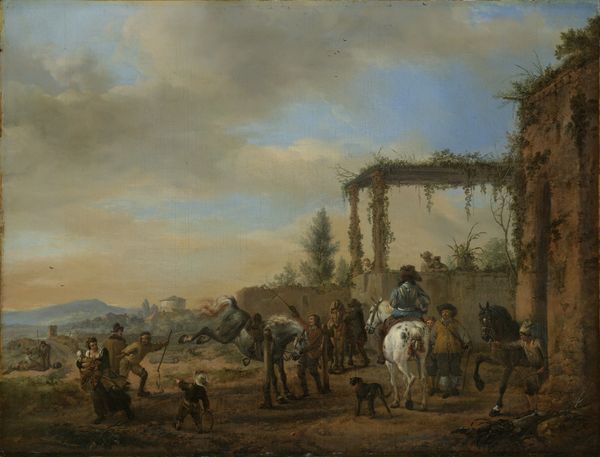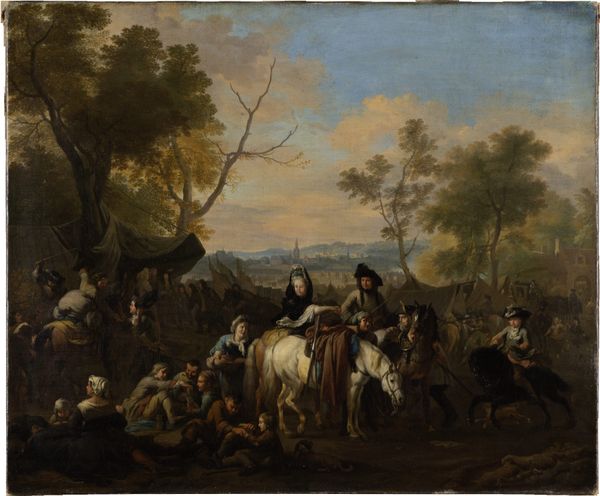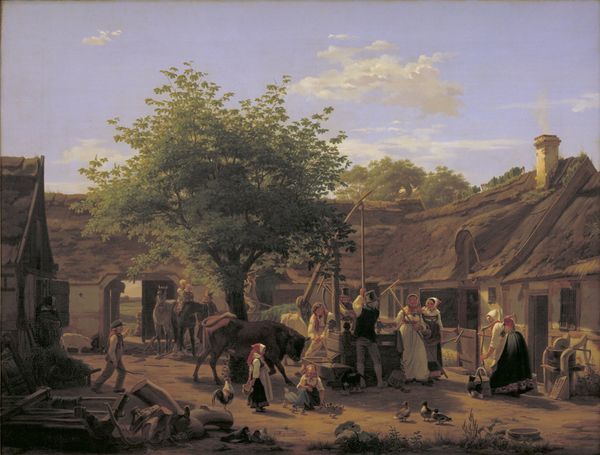
Dimensions: 127 x 275 cm
Copyright: Public domain
Editor: We’re looking at "The Fight at the Venta Nueva," a gouache and oil painting by Francisco de Goya from 1777. There’s such raw energy here; it’s quite a chaotic scene, almost like a snapshot of everyday conflict. What do you see in this piece, beyond just a bar fight? Curator: Beyond the immediate brawl, I see a reflection of deep social fissures. Goya situates this fight at a "venta," a roadside inn, which served as a gathering point for various social classes. It is vital to investigate who is fighting, and about what? Goya challenges us to consider who holds power and how marginalized groups are pitted against each other. Editor: That’s interesting. I hadn't considered the social commentary aspect. The clothing does seem to suggest different social strata clashing. Curator: Exactly. This wasn't just random violence; it reflects inherent tensions within Spanish society. We might even ask, is this painting commenting on class struggle, or is it reinforcing existing power dynamics by showcasing such scenes? How might contemporary feminist or race theory help us to see deeper patterns of systemic inequality? Editor: So, the artwork is not simply documenting a moment, but really, is also prompting viewers to reflect on issues that might otherwise go unseen, on the societal imbalances baked into the system. Curator: Precisely. Goya uses the everyday to expose uncomfortable truths, asking us to confront not only the violence on display but the structures that enable it. Reflect on how the picturesque Romantic landscape juxtaposes sharply with the brutality taking place on the foreground. Editor: It makes me rethink genre painting as not just scenes from everyday life, but commentary on real-world conditions. Thank you for that! Curator: My pleasure. It’s crucial to view art as more than aesthetics; they can serve as visual testaments to social and political issues.
Comments
No comments
Be the first to comment and join the conversation on the ultimate creative platform.
